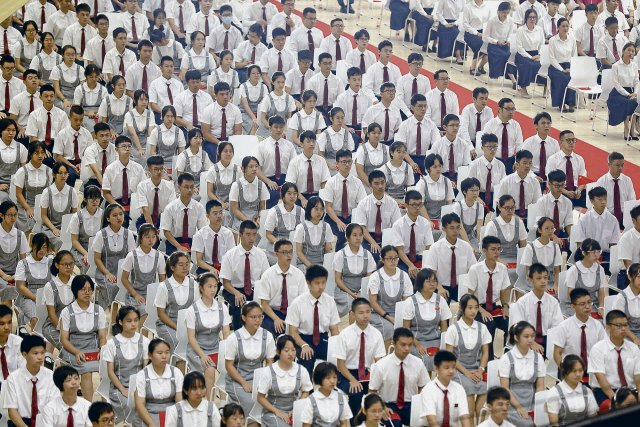60 percent of school graduates are now studying in China.
Photo: Imago/VCG
The global academic world is being shaken throughout. Negative developments in Western Europe and the United States meet a meticulous rise of Chinese research and development. While savings and research are saved in the west, numerous new universities are founded in China and top -class professors from all over the world are appointed.
However, global science not only suffers from cuts, but also from broken cooperations and political influence. For example, the EU has hired scientific cooperation with Russia as part of its sanctions, which is particularly disadvantage for arctic climate sciences. Now there are no more common measurements to the north sea to explore how much methane escapes from the sea floor there and acts as a highly potent climate in the atmosphere. Longer methane measuring rows from the Arctic Ocean would urgently need to estimate the upcoming development in the coming decades.
US President Donald Trump has been on a kind of killing spree against universities and climate research since taking office in January. Numerous programs that examined the dangers of climate change have been choked. Even projects of medical statistics that deal with the gender -specific effects of medication or the special health burden of People of Color in the USA were deleted. The Elite University Harvard is put under pressure not to accept foreign students, and at the end of May the government in Washington announced that they want to drastically reduce the number of student visa for Chinese in the future.
Good salaries and lush research funds attract university lecturers from all over the world.
This should also become a problem for some universities that usually take tuition fees in the United States. For them, the 222,000 Chinese citizens are not least an important source of income there. According to Statista, there were even almost 373,000 students from China at the highlight in 2019/20. According to Chris Glass, who teaches and researches at the Boston Center for Higher Education, the number of foreigners in the United States had already declined by eleven percent by March 2025, with the previous decline in Trump’s inauguration. Meanwhile, Harvard still opposes pressure and was right about courts.
While it has so far been mainly Indians who feel less desire to study in the USA, the number of students from China has hardly decreased, despite everything, the “South China Morning Post”, which appears in Hong Kong. However, this could change in the next few months, because many interested parties and their parents are alerted in the USA due to the sinophobic mood. During the first term of Donald Trump, there had already been a so-called China initiative of the Ministry of Justice, with which hundreds of scientists from China-mostly without reason-were accused of spying on the People’s Republic. Some of them lost the job or at least research funds. Many were damaged.
That and tempting offers from China have meant that some top researchers have now turned their back on the United States. According to a Stanford University survey, 61 percent of the Chinese-born researchers thought about leaving the United States before Trump took office. This comes for the People’s Republic at the right time, because there are currently new universities out of the ground like mushrooms after a warm rain. In Hong Kong’s neighboring town of Shenzhen alone, 45 years ago little more than a farming village, 20 new universities and colleges have been founded in the past five years. In 2024, the People’s Republic counted over 3000 such facilities (USA 4298), where more than 40 million young people studied, including a growing number from Africa. In the meantime, 60 percent of a year in China attend a university. For comparison: around 56 in Germany, around 65 percent in the USA.
Good salaries and lush research funds are now attracting university teachers from all over the world. The South Korean newspaper “Joongang Ilbo”, for example, recently reports on the platform “X” by the two top Korean researchers Lee Ki-Myung and Lee Young-Hee-Theoretical Physicists of the one, luminary in the field of carbon nanoral tubes of the other-who had no opportunity to research and were eliminated by Chinese facilities after their retirement.
Nd.Diewoche – Our weekly newsletter

With our weekly newsletter Organization Look at the most important topics of the week and read them Highlights our Saturday edition on Friday. Get the free subscription here.
According to his research and educational offensive, China is now in front of the United States according to various criteria, which have been the mecca of science for decades. The People’s Republic has surpassed the United States in the latest leaderboard of the Center for World University Rankings. While 346 Chinese institutions ended up among the 2000 best, the United States was only 319.
China had already overtaken the United States in the number of scientific publications in 2018, as the journal “Nature” had determined at the time. From 2022 it also has the nose in the most cited work in front, which could also be due to the fact that Chinese researchers quote their own compatriots above average. The Ministry of Education in Beijing is not yet satisfied with what has been achieved and wants to set up numerous institutes for top research in materials and engineering by 2030 and strengthen their international cooperation.
judi bola sbobet88 judi bola online sbobet88
